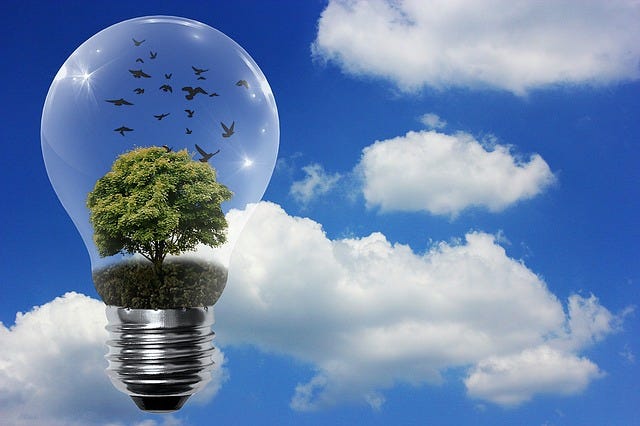Energy Crops and Food Waste Powering a Water Utility
Published on by Robert Brears, Founder of Our Future Water, Young Water Leaders, Mitidaption & Author (Springer Nature, Wiley) in Technology
The UK’s water utility Severn Trent is aiming to generate 50% of its own energy by 2020, up from 38% today. To reach this goal, the utility has developed one of the largest energy crop plants in the UK as well as opened its second food waste plant.
By Robert C. Brears*
To reach its goal, Severn Trent has developed a new crop digestion plant near Nottingham. At the plant, crop materials are fed into anaerobic digesters. Inside, bacteria are added and the mixture is kept at 42 °C. As the crops break down, methane is released for use in gas engines, from which the heat is used to keep the digesters or adjacent sewage works at their efficient temperatures and make electricity which can be used on-site or exported to the National Grid. A combination of maize, wheat, rye, and energy beet is used in the digesters, with the energy beet being a special hybrid form of sugar beet that produces a large amount of gas in digesters. Crops for use are also grown on Severn Trent land adjacent to the plant. In the past, contaminated materials were added to the land, making it unsuitable for food production for 900 years.

To further meet the renewable energy goal, Severn Trent’s second food waste plant at Stourbridge recently opened. The plant accepts food waste from a variety of sources including food and drink manufacturers, food processing companies, hospitality and food service outlets, local authorities, schools, supermarkets, and retail stores. With a capacity of 48,500 tons of both packaged and unpackaged food waste, the plant generates energy output of 2.4MW, the equivalent to the amount of electricity required to power over 4,000 homes for a year.
The take-out
The water utility of the future will be carbon-neutral, generate renewable energy from multiple sources, and be at times a net exporter of that renewable energy.
*Robert C. Brears is the author of Urban Water Security (Wiley) The Green Economy and the Water-Energy-Food Nexus (Palgrave Macmillan), Natural Resource Management and the Circular Economy (Palgrave Macmillan), Blue and Green Cities: The Role of Blue-Green Infrastructure in Managing Urban Water Resources (Palgrave Macmillan), and Climate Resilient Water Resources Management (Palgrave Macmillan). He is Founder of Our Future Water, Mitidaption, and Mark and Focus.
· LinkedIn Groups: Our Future Water / Urban Water Security
· Twitter: Our Future Water / Urban Water Security / YoungH20Leader
Attached link
https://medium.com/mark-and-focus/energy-crops-and-food-waste-powering-a-water-utility-b2f9882852b3Media
Taxonomy
- Renewable Energy
- Renewable Energy
- Circular Economy
- Renewable Energy

